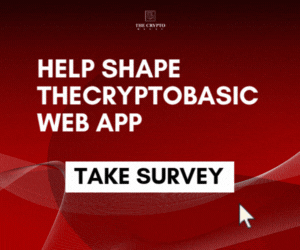“When can I unstake Ethereum?”, that is the question… gaining traction among crypto enthusiasts.
As cryptocurrencies continue to evolve incessantly, understanding the nuances of staking and unstaking Ethereum becomes essential, which is why this article by The Crypto Basic, your number one source for crypto news, aims to shed light on this topic, offering clarity for those navigating the intricate universe of crypto coins and staking.
What is Staking Ethereum?
Staking Ethereum refers to the process where Ethereum holders lock up their ETH to support the network’s operation; this transitioned significantly with the Ethereum network’s shift from proof-of-work (PoW) to proof-of-stake (PoS) in September 2022, known as The Merge.
Staking involves committing your Ethereum to the network, where it helps to secure the system and, in return, earns staking rewards.
This change aimed to enhance the network’s energy efficiency and scalability.
What Does it Mean to Unstake Ethereum?
Unstaking Ethereum is the process of withdrawing your staked ETH along with any earned rewards; it’s the reversal of staking, where you reclaim your staked Ethereum.
Unstaking became possible with the completion of the Shapella upgrades (Shanghai and Capella upgrades), which followed The Merge; these upgrades allow users to retrieve their initially staked principal and unlock their staking rewards.
When Should You Unstake Ethereum?
The decision to unstake Ethereum depends on several factors, including personal investment goals and market conditions; typically, you might consider unstaking:
1. When You Need Liquidity
If you require access to your staked ETH for trading or other purposes.
2. When Market Conditions Are Met
Based on your analysis of the crypto market, you might choose to unstake to capitalize on favorable market trends.
3. When You Require a Change in Your Investment Strategy
Shifting your investment focus away from staking to other forms of crypto investments.
The Process of Unstaking Ethereum
Unstaking Ethereum is a process that requires careful consideration due to its irreversible nature; here’s what you need to know:
1. Irreversible Requests
Once you submit an unstaking request, it cannot be canceled, i.e., your ETH in the unstaking process cannot be traded, transferred, or restaked.
2. Rewards During Unstaking
There’s no guarantee that ETH will continue earning new rewards during the unstaking period.
3. Timeline
Unstaking typically takes around 10 days, depending on network conditions and the number of users unstaking simultaneously.
4. Reward Unlocking
Post-Shapella upgrade, existing ETH staking rewards automatically go through an unlocking process, making them available without requiring an unstaking request.
Technical Aspects of Unstaking Ethereum
Understanding the technicalities behind unstaking is crucial, and here’s why:
1. The Shapella Upgrades
The Shapella upgrades made unstaking feasible on the Ethereum network by introducing changes to both the Execution Layer (“Deneb”, where smart contracts and transactions occur) and the Consensus Layer (“Cancun”, where network security and validator operations take place).
2. Types of Unstaking
Ethereum supports both full and partial unstaking: full unstaking involves exiting the active validator set and receiving the initial stake plus accrued rewards; partial unstaking happens automatically when a validator’s balance exceeds 32 ETH, where the excess amounts are sent to the validator’s address.
3. Exit Process
Exiting the validator set is a prerequisite for full unstaking; the time it takes to exit depends on the number of validators in the queue.
The process includes a cooldown period post-exit before the ETH can be unstaked.
Platform-Specific Unstaking Procedures
Different platforms have distinct procedures for unstaking Ethereum; for instance, on Kraken:
- Navigate to the ‘Earn’ section after signing in;
- Select Ethereum (ETH) from the list of assets and choose ‘Unstake’;
- Enter the amount to be unstaked and confirm the process;
- The unstaked amount will appear as ‘Pending’ in the Portfolio tab until the end of the lockup period.
Risks and Considerations in Unstaking Ethereum
Unstaking Ethereum is not without risks and considerations, including:
1. Market Volatility
The value of Ethereum can fluctuate significantly during the unstaking period.
2. Loss of Staking Rewards
Once you unstake, you forfeit potential future staking rewards.
3. Network Congestion
High demand for unstaking can lead to delays in processing requests.
Keeping Up with Ethereum and Crypto Trends
Staying updated with the latest trends and news in cryptocurrencies is vital for anyone engaged in staking or other crypto-related activities.
For the most recent updates and insights in the world of cryptocurrencies, The Crypto Basic is your go-to source.
DisClamier: This content is informational and should not be considered financial advice. The views expressed in this article may include the author's personal opinions and do not reflect The Crypto Basic opinion. Readers are encouraged to do thorough research before making any investment decisions. The Crypto Basic is not responsible for any financial losses.



